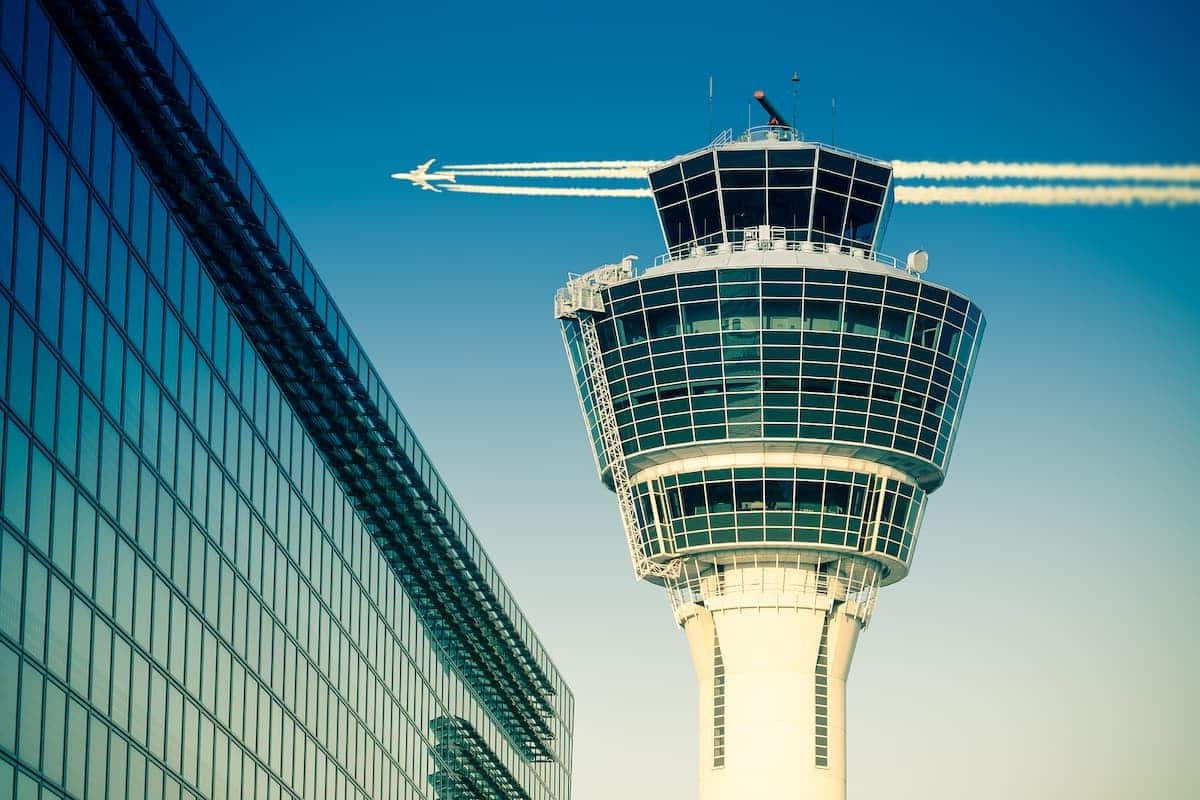
Ever wondered how planes land and take off so smoothly? Air traffic control towers play a huge role in making that happen. These tall structures, often seen at airports, are the nerve centers for managing aircraft movements. Air traffic controllers inside these towers communicate with pilots, ensuring safe distances between planes and guiding them through takeoffs, landings, and taxiing. They use radar, radios, and other tech to keep everything running like clockwork. Without these towers, air travel would be chaotic and dangerous. Curious about what goes on inside these towers? Here are 20 facts that will give you a peek into the world of air traffic control.
Key Takeaways:
- Air traffic control towers are crucial for keeping flights safe and on schedule, using advanced technology and well-trained controllers to manage air traffic 24/7.
- From their historic origins to their iconic structures, air traffic control towers play a vital role in aviation, ensuring safety and efficiency in the skies.
The Role of Air Traffic Control Towers
Air traffic control towers are essential for managing the safe and efficient movement of aircraft. These towering structures house the controllers who guide planes during takeoff, landing, and while they are in the airspace around airports.
-
Safety First: Air traffic controllers ensure the safety of thousands of flights daily by preventing collisions and managing the flow of aircraft.
-
Communication Hub: Controllers communicate with pilots using radio frequencies to provide instructions and updates.
-
24/7 Operation: Many control towers operate around the clock, ensuring continuous monitoring of air traffic.
-
Weather Monitoring: Towers are equipped with weather monitoring systems to provide pilots with real-time weather updates.
The Technology Inside Air Traffic Control Towers
Modern air traffic control towers are packed with advanced technology that aids controllers in their duties. These technologies help in tracking, communication, and decision-making.
-
Radar Systems: Towers use radar systems to track the position and speed of aircraft within their airspace.
-
Flight Data Processing: Advanced computers process flight data to help controllers manage multiple aircraft simultaneously.
-
Voice Communication Systems: High-quality voice communication systems ensure clear and reliable communication between controllers and pilots.
-
Surveillance Systems: Towers use surveillance systems to monitor aircraft on the ground and in the air.
The Training of Air Traffic Controllers
Becoming an air traffic controller requires rigorous training and a specific skill set. Controllers must be able to handle high-pressure situations and make quick decisions.
-
Intensive Training: Controllers undergo extensive training, including simulations and on-the-job training.
-
Stress Management: Training includes techniques for managing stress and maintaining focus during busy periods.
-
Quick Decision-Making: Controllers must be able to make quick and accurate decisions to ensure safety.
-
Attention to Detail: A high level of attention to detail is crucial for tracking multiple aircraft and providing precise instructions.
The History of Air Traffic Control Towers
Air traffic control has evolved significantly since its inception. The history of these towers reflects advancements in aviation and technology.
-
First Control Tower: The first air traffic control tower was established in Croydon, England, in 1920.
-
Early Communication: Early controllers used visual signals and basic radio communication to guide aircraft.
-
Technological Advancements: Over the decades, advancements in radar, computers, and communication systems have transformed air traffic control.
-
Global Standardization: International standards for air traffic control have been established to ensure consistency and safety worldwide.
Interesting Facts About Air Traffic Control Towers
Beyond their primary functions, air traffic control towers have some fascinating aspects that many people might not know.
-
Height Matters: The height of a control tower is designed to provide controllers with a clear view of the entire airport.
-
Iconic Structures: Some control towers are architectural landmarks, such as the one at Los Angeles International Airport.
-
Team Effort: Air traffic control is a team effort, with multiple controllers working together to manage different aspects of air traffic.
-
Emergency Protocols: Towers have strict protocols for handling emergencies, ensuring quick and effective responses to any situation.
Final Thoughts on Air Traffic Control Towers
Air traffic control towers are more than just tall structures at airports. They play a crucial role in keeping the skies safe and organized. From managing takeoffs and landings to ensuring planes maintain safe distances, these towers are the heartbeat of aviation. The technology inside is cutting-edge, and the controllers are highly trained professionals who handle immense pressure daily. Understanding their importance gives us a greater appreciation for the complexities of air travel. Next time you see a control tower, remember the vital work happening inside. It’s not just about guiding planes; it’s about ensuring every passenger reaches their destination safely. So, the next time you fly, take a moment to think about the incredible coordination and expertise that make your journey possible. Safe travels!
Frequently Asked Questions
Was this page helpful?
Our commitment to delivering trustworthy and engaging content is at the heart of what we do. Each fact on our site is contributed by real users like you, bringing a wealth of diverse insights and information. To ensure the highest standards of accuracy and reliability, our dedicated editors meticulously review each submission. This process guarantees that the facts we share are not only fascinating but also credible. Trust in our commitment to quality and authenticity as you explore and learn with us.


